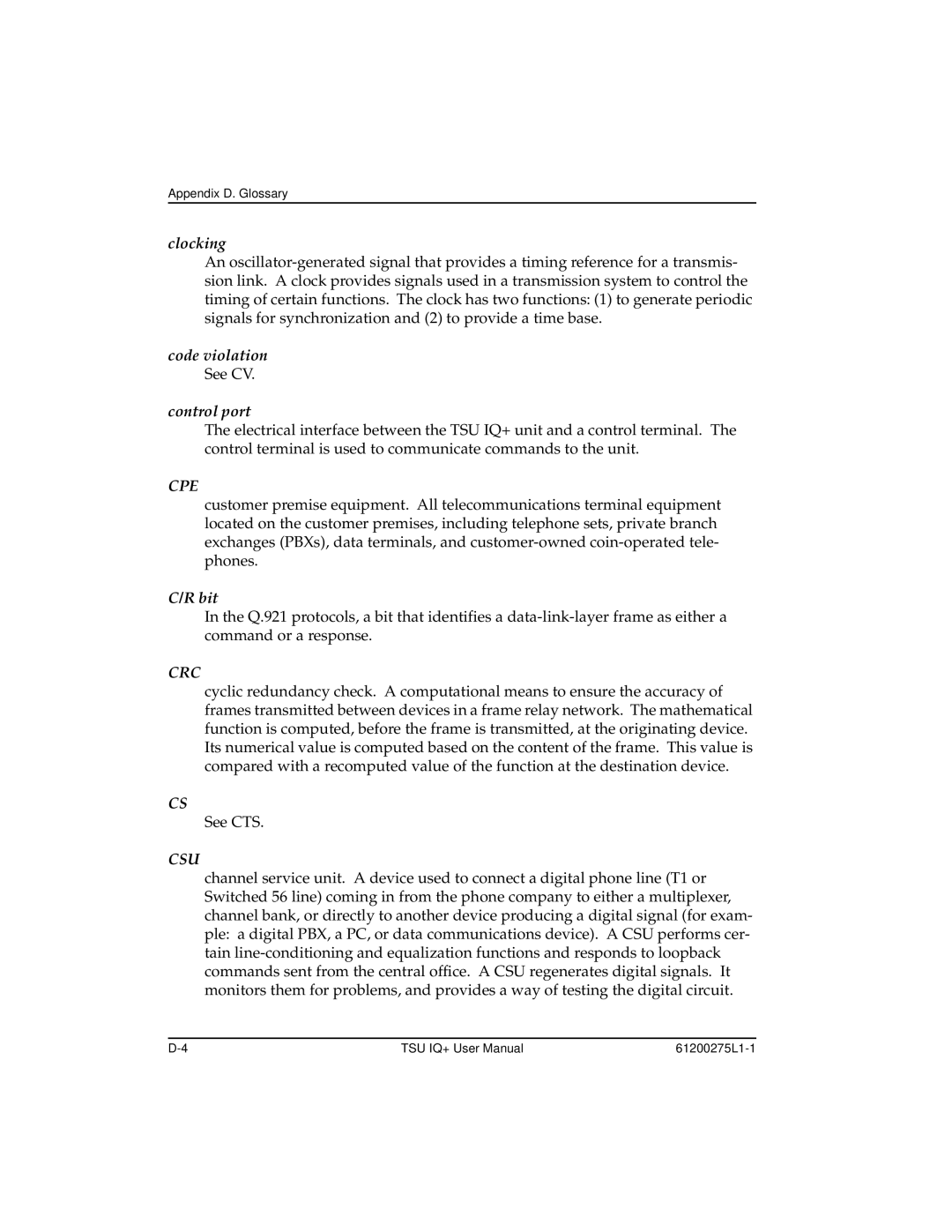
Appendix D. Glossary
clocking
An
code violation
See CV.
control port
The electrical interface between the TSU IQ+ unit and a control terminal. The control terminal is used to communicate commands to the unit.
CPE
customer premise equipment. All telecommunications terminal equipment located on the customer premises, including telephone sets, private branch exchanges (PBXs), data terminals, and
C/R bit
In the Q.921 protocols, a bit that identifies a
CRC
cyclic redundancy check. A computational means to ensure the accuracy of frames transmitted between devices in a frame relay network. The mathematical function is computed, before the frame is transmitted, at the originating device. Its numerical value is computed based on the content of the frame. This value is compared with a recomputed value of the function at the destination device.
CS
See CTS.
CSU
channel service unit. A device used to connect a digital phone line (T1 or Switched 56 line) coming in from the phone company to either a multiplexer, channel bank, or directly to another device producing a digital signal (for exam- ple: a digital PBX, a PC, or data communications device). A CSU performs cer- tain
TSU IQ+ User Manual |
|
